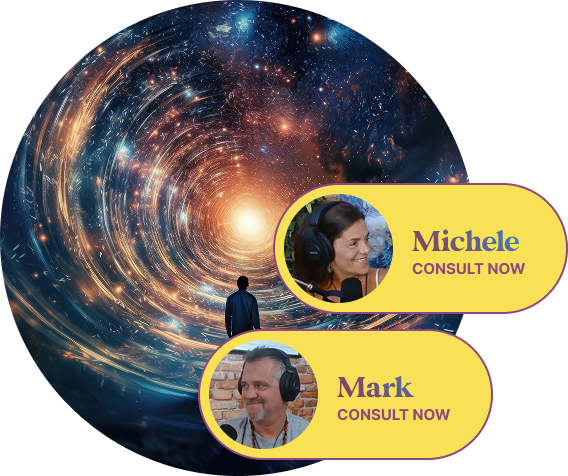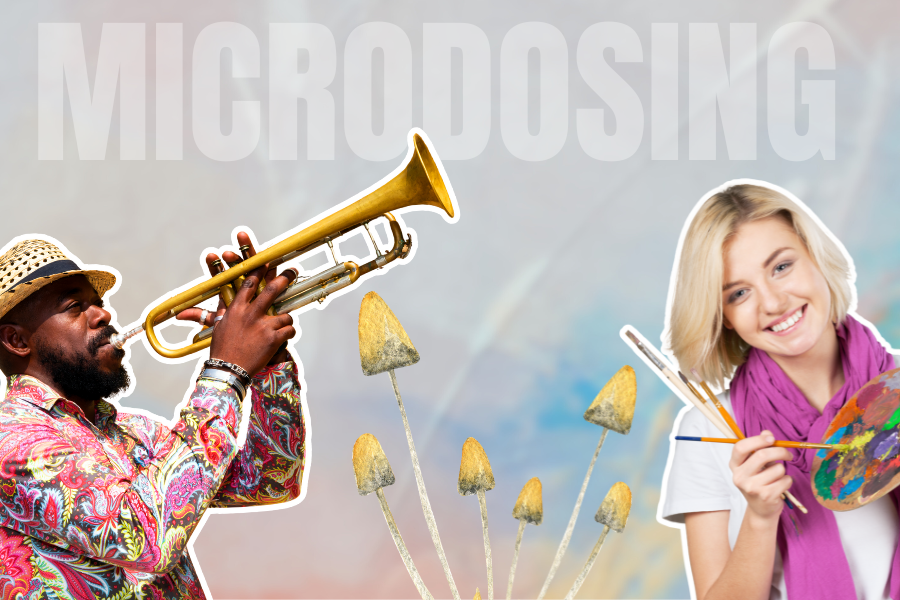

Table of Contents
Toggle
There’s a certain magic in those rare moments when creativity feels effortless. When words, colors, or sounds seem to pour through rather than from you. Time disappears, distractions fade, and something beyond logic takes the wheel. This state of total immersion, known as flow, has been studied by psychologists, chased by artists, and revered by mystics. Yet for many, accessing it feels like trying to catch smoke with bare hands.
Lately, though, a growing number of creators are turning to microdosing psychedelics as a bridge to that elusive zone. Tiny, sub-perceptual doses of psilocybin, too small to trigger hallucinations, are being explored not as a trip, but as a tune-up. And in the context of creative flow, they may be doing something intriguing: softening the mind’s grip, loosening its patterns, and letting intuition lead.
To understand how microdosing might support flow, it helps to look at what’s happening in the brain during both states. In flow, the prefrontal cortex (the part responsible for self-criticism, time awareness, and overthinking) quiets down in what researchers call transient hypofrontality. This temporary “turning down” of the inner narrator allows creativity to move more freely, unburdened by self-doubt or fear of failure.
Interestingly, microdosing seems to influence the brain in a similar way. Studies from institutions like Imperial College London suggest that low doses of psychedelics reduce rigid neural activity, encouraging what neuroscientists describe as “entropy” or increased connectivity between brain regions that don’t usually communicate. In simple terms, the mind becomes more fluid, less structured, more spontaneous. Ideas that might normally sit on opposite sides of the mental fence suddenly start talking to each other.
It’s not hard to see the overlap. Flow thrives on fluidity. Microdosing may simply make that state easier to enter, helping dissolve the internal noise that blocks creative momentum.
Creative resistance is a tricky beast. It often hides behind perfectionism, procrastination, or the ever-convincing story of “I’ll do it when I feel inspired.” Microdosing, according to countless anecdotal reports, can nudge the system out of that paralysis. Not by flooding the brain with stimulation, but by adjusting its default mode, subtly quieting the inner critic while amplifying presence. Users often describe being more engaged with their work, not necessarily euphoric or altered. Tasks that once felt dull regain texture; music sounds deeper, colors richer, ideas more accessible.
This isn’t just chemical. There’s a psychological component too. The simple act of committing to a microdosing protocol creates a rhythm, a ritual of sorts. That consistency alone can support creativity. Each dose day becomes a cue, a gentle reminder: today is for presence, for curiosity, for showing up to the work.
Creativity, paradoxically, requires a loss of control. The best ideas rarely come through brute force, they arrive sideways, in dreams, in showers, or during long walks with no agenda. Psychedelics, even in microdoses, tend to encourage this surrender. They soften the ego’s insistence on linear thinking and open space for intuition to speak.
That’s one reason many artists report that microdosing helps them “get out of their own way.” It’s not about escaping reality but rearranging the hierarchy of thought, giving the subconscious more room to breathe. When the analytical mind takes a back seat, something more primal and spontaneous takes over.
A study published in Psychopharmacology in 2018 found that microdosing improved both divergent and convergent thinking, the two types of cognition that fuel creativity. Divergent thinking generates ideas; convergent thinking refines them. Flow depends on the dance between these two. Microdosing, it seems, may help keep that dance in motion.

One of the more poetic side effects of microdosing is the heightened awareness it brings to ordinary moments. Light catches differently. Music feels more layered. A cup of coffee becomes a small ritual rather than a rushed necessity. This subtle sharpening of the senses often translates into deeper creative inspiration. Painters talk about seeing new shades within familiar colors. Writers notice rhythms in sentences they hadn’t before. Musicians find melodies where silence once sat. When the mind tunes itself to this finer frequency, creativity flows less from effort and more from attunement.
It’s not a stretch to imagine why ancient cultures viewed entheogens as tools for communion, with the divine, with nature, or with the self. Microdosing might be a modern echo of that same impulse: to touch the world more deeply, and express it more truthfully.
Of course, no chemical, no matter how sacred or scientifically intriguing, can replace intention. Microdosing isn’t a magic key, it’s an amplifier. If the intention behind it is grounded in curiosity, healing, or creative exploration, the results tend to reflect that. But if it’s used as a shortcut or a productivity hack, the effect can feel hollow or inconsistent.
Many who experiment with microdosing for creativity combine it with mindfulness, journaling, or nature walks. These practices act as anchors, helping translate the subtle cognitive shifts into tangible creative work. The most effective microdosers often treat the experience as a dialogue rather than a transaction, listening as much as doing.
There’s a quiet revolution happening in the creative world. From Silicon Valley coders to underground poets, more people are exploring how entheogens can support the mind’s natural genius rather than overpower it. Microdosing isn’t about escaping reality, it’s about re-immersing in it, peeling back the layers of distraction to rediscover what’s already there.
In a culture obsessed with productivity hacks and optimization, it’s refreshing that the most powerful creative tools might actually slow us down. The flow state, after all, isn’t about doing more, it’s about being so present that creation happens through you, not from you. Microdosing may simply remind the mind how to listen, how to loosen, and how to trust the current that’s been there all along.
Flow, by definition, requires balance. Too much stimulation (mental, emotional, or chemical) can knock the system off course. Microdosing, when done carelessly or too frequently, can lead to restlessness, anxiety, or tolerance. The key lies in subtlety. The dose should be barely perceptible, a whisper rather than a shout. It’s also essential to consider context: set and setting apply even at micro levels. The environment, mindset, and emotional state of the individual all play roles in shaping the experience. And, of course, legality varies widely across regions. Anyone exploring microdosing should research their local laws and, ideally, consult with a health professional before beginning.
Whether or not microdosing becomes the next great creative ritual remains to be seen. But one thing is clear: the hunger for connection, to self, to inspiration, to something larger, isn’t going away. Psychedelics, in their gentlest doses, may be helping a new generation remember that creativity isn’t a skill to master, but a state to return to.
Flow isn’t about forcing the river to move faster. It’s about remembering how to float.
Invite your friends and earn a discount on your next purchase. Your friend also earns a discount! Get started now, by sharing your referral link with your friends.
This item is currently out of stock!
By adding it to your cart, you confirm a backorder purchase, and we will ship it as soon as it becomes available.